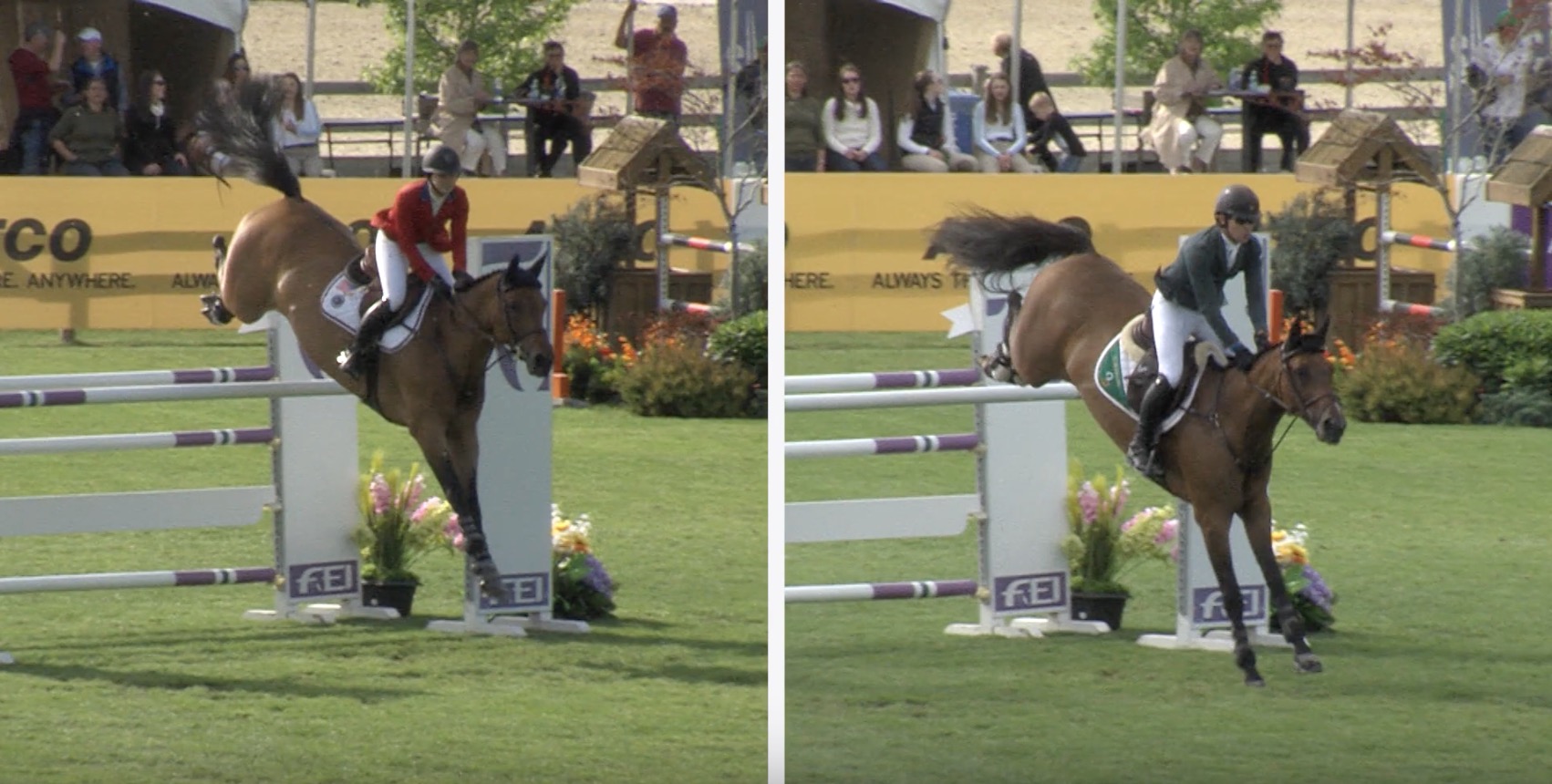Have you ever wondered how much time a lofty jumper spends in the air versus a horse that just skims over the fences?
Is scope the be all to end all?
Or is drool-worthy airtime actually a competitive disadvantage?
Tim Worden, PhD, explains how jumping style measures up against the clock in the international ring:
“When you watch an FEI jumping competition, you’ll notice a wide range of jumping styles and it’s interesting to consider how these different jumping techniques factor into how long it takes for the horse to complete the course.
So, on one hand, you have those horses that seem to just barely clear the jump. The horses raise their bodies just high enough to skim over. And this movement is relatively quick and efficient.
And then on the other hand you have those horses that really slow in front of the jump, load the hind end and shoot way up over the jump. For these horses it’s not uncommon in an FEI setting for them to spend a 150 milliseconds more in the air than those other quicker horses.
Although that may not seem like a lot of time, if you consider a Grand Prix with 17 jumping efforts, for example, the horse that spends more time in the air, all else being equal between the jumps between the two types of horses, that big powerful jumper will take two and half seconds longer to complete that course.”
Huh!




 January 31, 2019
January 31, 2019 






















